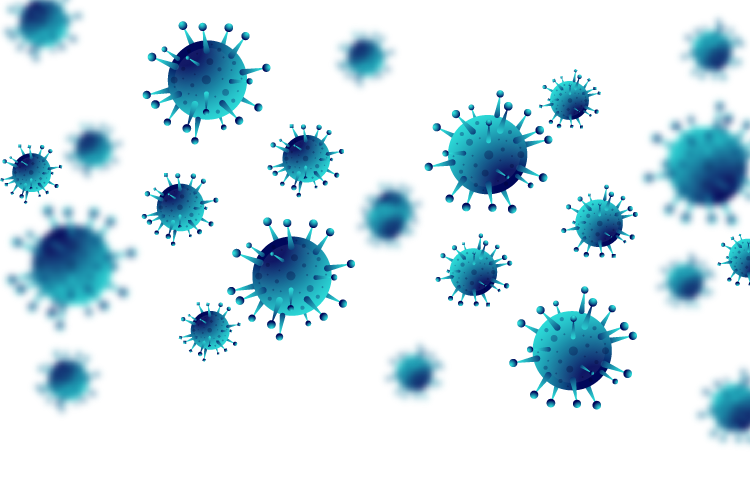
Lessons from the COVID-19 pandemic
How do we detect viral transmission?
During the first COVID-19 wave in the spring of 2020, it was difficult to get a correct view of the actual circulation of the virus because there was so little testing.
In March 2020, with our limited testing capacity, we probably only detected about 2.5 to 3% of all actual infections. Especially infections with mild or even no symptoms stayed under the radar. For all of these reasons, the number of confirmed infections was a very unreliable indicator of the extend of viral spread among the population. We had no other option than to estimate the reproduction number based on other data.
Beyond diagnosis, reliable tests are also crucial for monitoring viral spread which in turn is indispensable when trying to control an epidemic. Without reliable figures on the dynamics of infections, we are completely in the dark. Detecting an infection can be done in different ways though, and different tests provide us with different pieces of the puzzle.
PCR and antigen tests detects presence of the virus
Samples collected at test centers that were set up across the country were sent to the lab for a molecular PCR test. That test detects the presence of the virus itself based on its genetic material. PCR is short for polymerase chain reaction, a way to start replicating genetic material. The principle is simple: a unique piece of genetic material is copied thanks to a special target and a temperature-sensitive enzyme that copies DNA and RNA molecules. By increasing and decreasing the temperature in steps, the unique piece is duplicated time and time again. Laboratories report positive PCR results based on how many copies of the unique SARS-CoV-2 viral RNA piece are recovered from a given sample after this step by step amplification. Precisely because the genetic material is duplicated over and over, this technique is very sensitive.
The self-tests that we ended up using at home are antigen tests. An antigen test looks for viral proteins. Specific antibodies detect the presence of viral particles. Unlinke the PCR test, these antigen steps do not include replication steps, which is why this type of test is usually much less sensitive: you need more virus particles to get a positive result.
A serological test detects immunity
An alternative way to find out who was infected (but not necessarily infectious) is to look for antibodies in blood. This can be done in random samples, for example from blood donors or other surplus material from hospital blood tests.
Serological tests are not useful to diagnose a COVID-19 infection, because they cannot detect early stages of infection. Antibodies only start to accumlate in the blood in the days and weeks after infection. However, serological tests can detect past infections--provided the built-up immunity lasts. This makes them very useful to get a view of the proportion of asymptotic cases, which in many cases would stay under the radar because people without symptoms simply do not get tested. Unfortunately, the post-infection immunity for COVID-19 was ultimately found to be much shorter than initially thought.
In addition, serological testing are helpful to verify the effectiveness of vaccines--although there are limitations here as well. For example, antibody levels do not necessarily correspond directly to the strength of protection against reinfection, they cannot, without additional knowledge, confirm whether someone is protected or infectious, and thus are not a unified "immunity passport”.
Pierre Van Damme of the University of Antwerp undertook enormous efforts to collect serological data during the turbulent first months of the pandemic. We were able to build on past experience to do as much as possible with the limited data available from routine blood tests. This experience from past studies on measles, mumps, rubella, etc. paid off and quickly showed us that the actual number of infections was a multiple of what was tested and confirmed, but also that the accumulated immunity was limited.